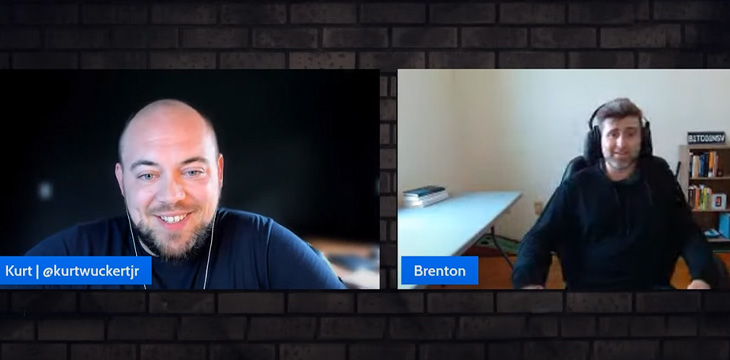|
Getting your Trinity Audio player ready...
|
RUN’s CEO Brenton Gunning and CoinGeek’s Chief Bitcoin Historian Kurt Wuckert Jr. engaged in an in-depth conversation about the RUN protocol, how it began and where it is heading.
RUN launched in 2019 with a goal to build a JavaScript programming layer, says Gunning. Despite what people say about JavaScript, he believes it’s a good language for smart contracts or tokens with deterministic aspects. Gunning says there are now about 240 million transactions on RUN, higher than Ethereum‘s transactions.
At the London CoinGeek conference in 2020, Gunning discussed the idea of generating tokens on Bitcoin, which Wuckert thought was “theoretically possible.” Wuckert comments that over 90% of all transactions on the BSV network are now RUN tokens.
“It all blew up really quickly,” Gunning says. “People like to own stuff, they like to have control over their data, especially in this world where you don’t really have any control over what you do.” And with the RUN protocol, this is possible. An example is CryptoFights, where all game actions are recorded on-chain, all of which are RUN tokens.
In this episode of the CoinGeek Weekly Livestream, Gunning describes how he got his start with Bitcoin and how he eventually chose BSV.
“I’ve been around Bitcoin since Bitcoin Cash phase in 2017 it’s kind of when I got involved,” he says. Gunning left his job at Snapchat in 2018 and began looking into Bitcoin technology, where he saw an endless opportunity. “There just aren’t that many scalable UTXO chains out there,” he says. For his part, he believes BSV is the most stable protocol.
Gunning also announced a new update to the SDK, which is set to be published in a matter of days. In the new version, he says programmers will no longer have to rely on the BSV library.
“We don’t want this third-party dependency on especially very sensitive code, so the next release is going to have one JavaScript file that has everything you need,” he explains.
The team is also working on releasing RUN version 1.0 and the 07 protocol, which will have a number of updates, opening up an option for smart contracts with a binary metadata format. He believes that the token explosion we see today will be followed by a next phase: smart contracts.
“You’re going to see more interactivity, more interoperability, more ability to take the stuff you own and do interesting things with it and other applications,” Gunning says.
“You see that a lot of other blockchains right now, like Ethereum contracts, are very interoperable and can call each other and they can definitely send some stuff to each other. But that’s harder on a UTXO based model because all of your outputs are unique, and so that’s the problem we’re trying to solve here,” he adds.
Watch the previous episodes of CoinGeek Weekly Livestream on YouTube.

 01-07-2026
01-07-2026 




